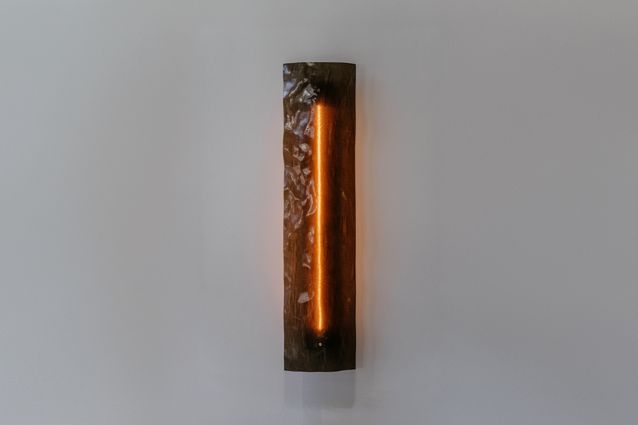Architizer is inviting A+Awards submissions in the Architecture +Prefab category, celebrating the architects at the cutting edge of this fast emerging discipline. Submit your best new projects in this and other categories before March 12th, 2021 for worldwide recognition.
Prefabricated buildings have been part of our towns and cities for hundreds of years. A product of the industrialization of society, it has long been viewed as logical — and cost-effective — to combine the ever-improving manufacturing process with the construction of our homes. The original post-war prefabs were built out of necessity over beauty — people needed houses, cheap and fast. While today’s prefabricated designs aspire to a higher aesthetic, their main qualities remain the same as those original structures. When designed in the right way, prefab homes are cheaper, more sustainable and much faster to construct.
The advent of cutting edge technologies over the last decade have elevated expectations for the archetypal prefabricated home. BIM, CAD, robotic construction and 3D printing systems all lend themselves perfectly to the repetition of modular design elements, making the prefabrication process increasingly efficient. Serving as ample inspiration for A+Awards entrants in the Architecture +Prefab category (start your submission here), the following collection of modern homes show what can be achieved when manufacturing a building off-site.

 hinterhouse by Ménard Dworkind Architecture & Design, La Conception, Canada
hinterhouse by Ménard Dworkind Architecture & Design, La Conception, Canada
Inspired by cabins in the Norwegian mountains and using Japanese design cues, hinterhouse in Canada is designed to improve well-being while supporting a reconnection with nature. Built almost entirely from sustainably-forested wood, the Cedar wrapped, minimalist house was transported on local roads and delivered to site, simply and efficiently. With two bedrooms, one bathroom and open-plan living space, the 930-square-foot home is elegant and modern while retaining a rustic charm. The house can transform thanks to its large sliding doors, closing up when protection from the elements is needed or being completely open, allowing an abundance of light and air into the space.

 CHARRIERE – 35 social housing units and shop by Mobile Architectural Office, Paris, France
CHARRIERE – 35 social housing units and shop by Mobile Architectural Office, Paris, France
Located on the site of an old Botelli cabinet making workshop, the social housing development by MAO uses prefabrication to bring a unique sense of the past into the present. The building, which reinterprets Parisian industrial architecture is an assembly of different components, precast concrete supports and slabs interlink with large timber trusses to create the fabric of the building. Each component is intricately assembled like that of a piece of furniture, much like the cabinets lovingly made on the site decades before.

 Home-Office Pods AAND Sayana by Aaksen Responsible Aarchitecture, Bandung, Indonesia
Home-Office Pods AAND Sayana by Aaksen Responsible Aarchitecture, Bandung, Indonesia
Designed in response to the global pandemic and its impact on workers, AAND Sayana is a prefabricated modular home office that can be fully assembled within 3 weeks. Made in a factory, the cross laminated timber (CLT) building is labeled as an earthquake-resistant structure, and its energy supply is supported by an on-grid solar panel system. With a focus on high-quality, local, prefabricated materials, the building can be constructed easily by even the most inexperienced DIY tradesperson.

 Courtyard House by CHROFI, Mungo Brush, Australia
Courtyard House by CHROFI, Mungo Brush, Australia
Constructed on top of pegs so as to not disrupt the land below, Courtyard House by CHROFI is a completely off-grid prefabricated home. The surprisingly large home disguises its temporary nature by connecting offset modules that can be rotated and mirrored to suit its site. Breaking away from the traditional linear structure of a prefab, the building emulates that of a traditional Australian rural home while being significantly less invasive. Generating its own solar power and harvesting its own rainwater, a range of passive systems are used to naturally heat and cool the building.
 VDC by SUMMARY, Vale de Cambra, Portugal
VDC by SUMMARY, Vale de Cambra, Portugal
In the foothills of Portugal’s Serra da Estrela mountains, architecture firm SUMMARY used an affordable prefabricated building system named the “Gomos System” to construct a 10,743-square-foot development in just eight months. The mixed-use development combines individual concrete modules to create a distinctive geometric building. The adaptable housing development is left bare on the exterior, exposing all parts of the construction process to reduce the overall cost. The interiors, although primarily concrete, introduce bright colors to create an uplifting contrast.

 Koto x Abodu – USA by Koto Design, United States
Koto x Abodu – USA by Koto Design, United States
Renowned for their work on design-led prefabricated homes, Koto Design teamed up with USA-based housing company Abodu to design their first modular home. Promising to be delivered in less than 12 weeks, the Scandinavian-inspired cabins seamlessly pair technology and craftsmanship to create stunning compact properties that are fully customizable and come in various sizes.

 No Footprint House by A-01, Ojochal, Costa Rica
No Footprint House by A-01, Ojochal, Costa Rica
The beautifully open and cross-ventilated prefabricated No Footprint House by A-01 in Costa Rica is a prototype for a series of future zero-carbon homes. Located on the edge of a tropical rainforest the building’s timber facade panels can be opened or closed to regulate views and exposure. Only using materials where the environmental footprint has been fully considered the building uses a steel frame structure organized around a central service core. Fully adaptable and hugely affordable the unique building can be transported on the back of a single truck assembled and disassembled when required.
This striking project won a 2019 A+Award in the Architecture +Sustainability category.
Now it’s your turn — submit your best new projects in the Architecture +Prefab category and others for worldwide recognition and international publication, both in print and online!












